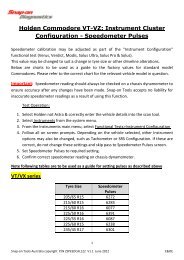Volkswagen-Audi Vehicle Communication Software Manual [888kb ...
Volkswagen-Audi Vehicle Communication Software Manual [888kb ...
Volkswagen-Audi Vehicle Communication Software Manual [888kb ...
You also want an ePaper? Increase the reach of your titles
YUMPU automatically turns print PDFs into web optimized ePapers that Google loves.
Operations<br />
Identifying the <strong>Vehicle</strong><br />
3.1.1 Engine ID Codes<br />
The vehicle identification process includes entering the test vehicle’s engine ID code. The exact<br />
engine ID code selection is usually not required for vehicle communications, however, in order for<br />
the scan tool to communicate with all installed systems, we recommend that you identify the<br />
correct engine code. The scan tool has to match all possible control module identities with the<br />
exact control module installed in the vehicle. In addition, the engine ID code is required to select<br />
the correct OBD-II Readiness Monitor setting procedures. See the <strong>Volkswagen</strong>/<strong>Audi</strong> OBD-II<br />
Readiness Charts for more information.<br />
VW/<strong>Audi</strong> specific engine differences are determined by a three-digit engine ID code. In any<br />
particular year, there could be multiple engine ID codes for any one engine. The engine codes<br />
may represent different horsepower, torque rating or emission package.<br />
Engine ID codes are stamped on the engine block in three-digit alpha characters followed by a<br />
series of numbers (usually six), for example, “AEG 029452". If more than 999,999 engines with the<br />
same engine code are produced, the first number is replaced by a letter. Newer models may also<br />
have an adhesive label located on the timing belt cover. The engine ID code can be difficult to<br />
locate on older engines with excessive oil and grease. Here are typical older model 4- and<br />
6-cylinder locations:<br />
• 4-cylinder engine codes and numbers are usually, stamped into the rear of the cylinder block<br />
casting near the oil filter flange near the engine/transmission joint.<br />
• 6-cylinder engine codes are usually located on the left side of the engine block below the<br />
camshaft timing chain tensioner. The code numbers should be visible when looking down<br />
between the throttle valve control module and the valve cover.<br />
Note the following when looking for an engine ID code:<br />
• Alternatively, look in the owners “maintenance” manual for an adhesive sticker.<br />
• For most engines, the engine ID code is also included on the vehicle data plate, typically<br />
located in the trunk near the spare tire. This may be the easiest way to find the engine code.<br />
Table 3-1 contains engine ID code locations for <strong>Audi</strong> models.<br />
Table 3-1 <strong>Volkswagen</strong> engine ID code locations (part 1 of 4)<br />
Model Year Engine Code Location<br />
Beetle<br />
1999 and<br />
later<br />
1998–2002<br />
2003<br />
2004 and<br />
later<br />
1.8L<br />
1.9L 4-cyl<br />
2V TDI<br />
2.0L 4-cyl<br />
2V<br />
1.8L<br />
Turbo<br />
1.9L TDI<br />
APH, AWP, AWV: Near the engine/transmission joint. Also on a<br />
sticker on the toothed belt guard.<br />
ALH: Between the diesel injection pump and the exhaust manifold<br />
on the engine block. Also on a sticker on the timing belt guard.<br />
BBW, BDC: On the front of the engine near the engine/<br />
transmission joint. Also on a sticker on the cylinder head cover and<br />
vehicle data plate.<br />
AWU: Unknown at this time.<br />
BKF: The engine number can be found on the joint between<br />
engine/gearbox.<br />
BNU: The engine number can be found on the joint between<br />
engine/gearbox.<br />
BEW: The engine number can be found on the joint between<br />
engine/gearbox.<br />
5



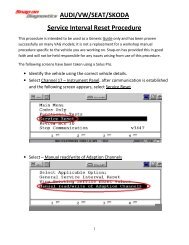

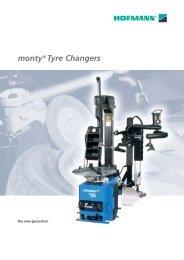
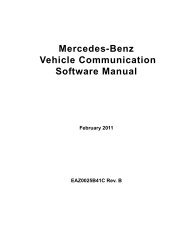
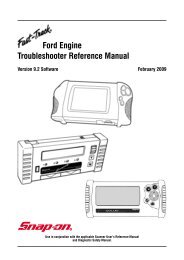
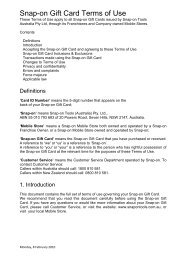
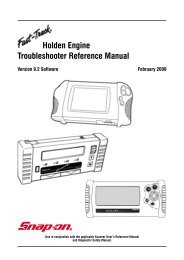
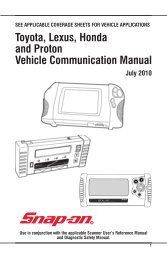
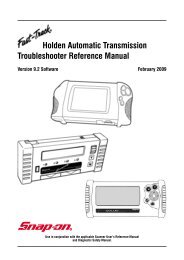
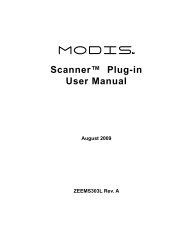
![BMW Vehicle Communication Software Manual [1198kb PDF File]](https://img.yumpu.com/41822192/1/190x247/bmw-vehicle-communication-software-manual-1198kb-pdf-file.jpg?quality=85)

